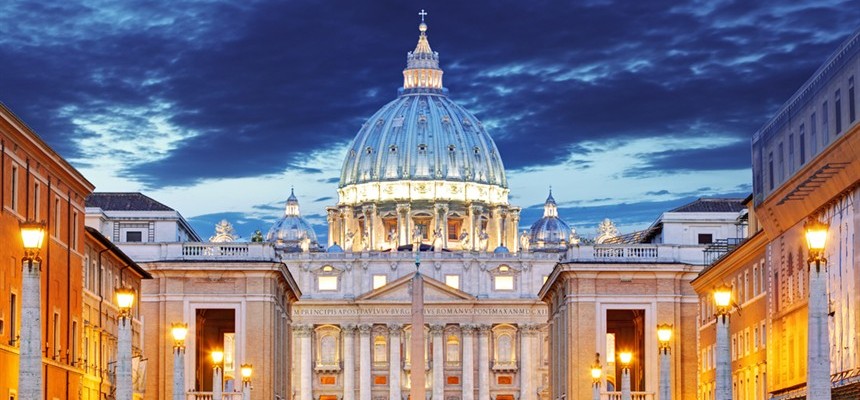
Stories abound regarding John’s origins. Some say he was the son of Pope Sergius IV and his mistress, Marozia, daughter of Theophylact, the virtual ruler of Rome for many years. Others say he was the son of John, born in Tossignano, in Bologna. He seems to have been a relative of Theodora, the wife of Theophylact, which may account for the storyline.
It appears that Theodora was interested in furthering the career of her younger relative, who was ordained a deacon in 905/907 by Peter, bishop of Bologna. She was planning on having him installed in Bologna when an even greater option opened, the archbishopric of Ravenna. John was given the honor.
It is said that, as archbishop of Ravenna, he worked hard with Pope Sergius to force the deposition of Louis the Blind and have Berengar of Friuli. The fight went on for years. He probably supported Pope Lando, also, for the short period of that papacy.
In the spring of 914, at the death of Pope Lando, John was summoned to Rome by a committee. It was headed by Theophylact of Tusculum, the husband of John’s relative. John had had a good relationship with the virtual ruler of Rome. They had one thing in common: they refused to accept the ordinations of Formosus. After a generation, this was still a sore point. John was simply put on the throne of Peter. It was against canon law for a bishop to switch sees. And it was against the 769 Council of Lateran to place a pope on the throne with out an election. John had a host of enemies criticizing him for years, but, as long as Theophylact stayed alive, John was safe.
The first problem John faced, after taking the chair of Peter, was the troublesome Saracen outpost on the Garigliano River. This was their staging point for pillaging southern Italy. John consulted Landulf of Benevento and Capua. Landulf was a good military strategist. From 909 to 914, he was awarded titles by Byzantium, signed treaties with Naples and other rulers of Southern Italy and arranged marriages of relatives with several of his allies. Landulf was in a position to control armies. John was in a position to push Berenger into providing troops for a massive campaign. By working together, armies from all over Italy convened on the river. They surrounded the outpost for months, eventually killing all within. Although most claim that it was Landulf’s win, Berenger requested recompense. In December of 915, Berenger and followers showed up at St. Peter’s. They were welcomed by the Theophylact family and he was crowned emperor.
A few years of relative peace seems to have ensued. And Pope John was able to concentrate on the religious aspects of his papacy. John was asked to confirm the acts of a synod which had condemned fourth marriages. This was supported by the Byzantine emperor and the patriarch of Constantinople. This ended, temporarily, a growing schism which a previous pope had permitted.
John tried to enforce Latin, rather than Slavic in public liturgies. Due to communications and travel difficulties, he never signed his approval of the synod of Spelt of 926. It was put into settlement only after his deposition and death. He did send papal legates to try to stop war between the Slavs and Croats.
He had time to rebuild the Lateran Basilica which had been destroyed in the earthquake of 897. He supported improvements to several monasteries, in particular the reform of Cluny Abbey, following the strict adherence to the rule of St. Benedict. He negotiated for lands for several other abbeys in Spain and fought for correct succession of bishops in Germany.
In 923, Berenger was defeated by an association of Italian princes, destroying the dream of Italian unity. He was assassinated the next year. In 925, both Theophylact and Alberic of Spoleto died, thus eliminating three of John’s staunchest allies. Marozia, daughter of Theophylact, and newly married to the strong Guido, Margrave of Tuscany, had ambitions against John. The political upheaval and power struggle began again. John’s brother, Peter, was killed in 928 and John was thrown into prison shortly after. He was dead by 929.
It is thought that John was buried at the Lateran, since he did so much to restore the building.

//www.amazon.com/dp/0983975841

Recent Comments